
Visiting Japan in July: Where to Go, What to Do, the Weather & More
- Written by: Gabriel Wilkinson
Visiting Japan in July is an unforgettable experience. Summer is in full swing, with vibrant festivals, seasonal treats, and scenic landscapes at their peak. This guide will walk you through what makes July special, how to prepare, where to go, and what to see and do.
(Main image: PIXTA)
(This article may contain promotions)
Why July is a Good Time to Visit Japan
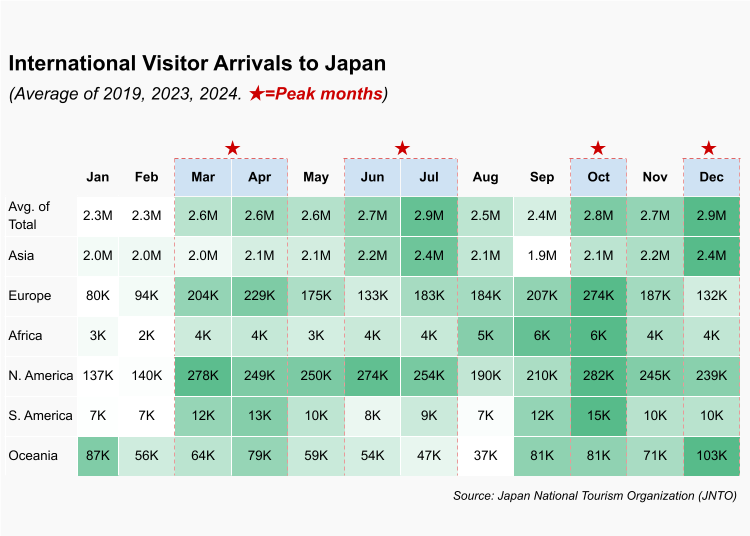
Japan's summer scene truly comes alive in July. It's a month filled with festivals (matsuri), fireworks, and outdoor activities. Summer is peak festival season in Japan.
In July, you can catch unique cultural celebrations like Tanabata (Star Festival) and the Gion Matsuri in Kyoto.
The weather is hot and humid, but that also means beach season in Okinawa and hiking season in the Japanese Alps. July is when Mount Fuji's climbing season begins, inviting adventure seekers to ascend Japan's highest peak under generally safe conditions.
School holidays typically start in late July, so if you visit earlier in the month, you can experience many events before the domestic travel rush. Early to mid-July tends to be a sweet spot – after the June rains taper off, but before the August crowds.
Weather in Japan During July
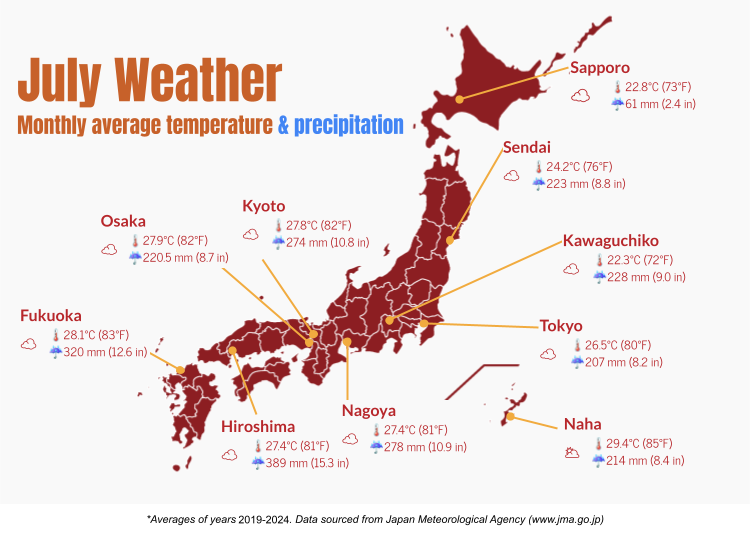
Japan’s climate varies by region, but July generally brings hot, humid weather as the country shifts from the rainy season into summer.
In central Japan, early July is often rainy and muggy, but conditions turn sunnier and hotter by late month. Average highs reach 29–30°C (84–86°F), and humidity remains high.
Tokyo averages highs around 28–29°C, with lows near 23°C (73°F). July is its most humid month (76–81%), making it feel hotter than the numbers suggest.
Hokkaido stays cooler and more comfortable, with Sapporo averaging around 21°C (70°F).
Kyoto and Osaka are slightly hotter than Tokyo and equally humid. Kyoto's basin location makes the 30°C heat feel even more stifling.
In Kyushu and Shikoku, early July brings lingering showers, but skies clear and temperatures rise by mid-month.
Okinawa sees true tropical summer: hot, sunny, and humid with warm seas (28–29°C), ideal for swimming.
One additional note: Although typhoons typically peak in late summer (August–September), they may also be present in July. Keep an eye on weather forecasts, especially if traveling to Okinawa or coastal areas.
What to Pack for a Trip in July

Well-thought-out packing for July in Japan is crucial. Here are the essentials.
- Lightweight Clothing: Pack loose-fitting shirts, shorts, skirts, and maybe a pair of light pants. Choose cotton, linen, or moisture-wicking fabrics.
- Sun Protection: Bring a sun hat, sunglasses, and high-SPF sunscreen. The summer sun is strong, and you'll likely be outdoors for festivals or sightseeing. Read more about recommended sunscreens here.
- Bring Insect Repellent for Outdoor Trips: Especially during summer and in rural areas, mosquitoes can be a nuisance. You can easily find sprays, wipes, and wearable repellents at drugstores or convenience stores across Japan. Read more about recommended insect repellents here.
- Rain Gear: Early July can still be rainy. Pack a compact umbrella or a lightweight rain jacket/poncho. You might encounter sudden showers, and if you're in mountain or coastal regions, weather can change quickly.
- Refillable Water Bottle: Hydration is key in Japan's summer, so bring a reliable water bottle. You can refill at vending machines (buying water or tea) or use Japan's many clean water fountains.
- Backpack or Daypack: Carry water, sunscreen, umbrella, etc., during the day. Also handy for any souvenirs you pick up at festivals.
Where to Go in Japan in July
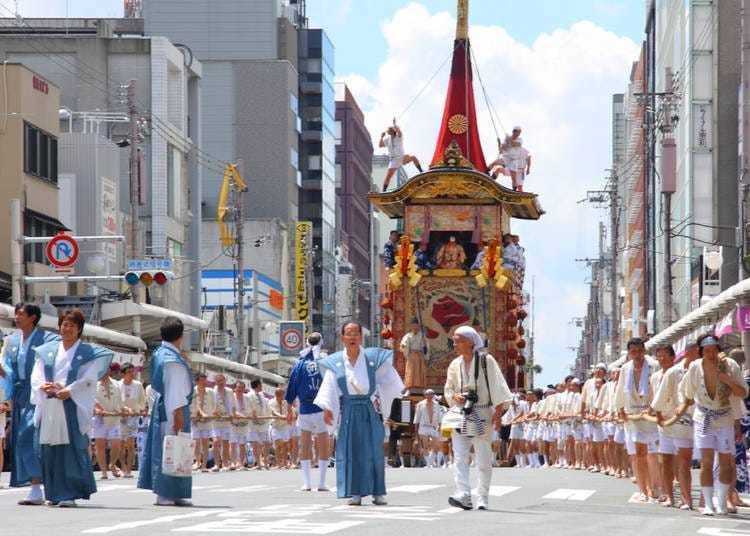
Japan's diverse regions each offer something special in July. Here are a few suggestions, including some lesser-known or off-the-beaten-path destinations to help you avoid some of the summer heat, travel with kids, see amazing scenery, or escape crowds.
Best Place for Good Weather: Nagano (Central Japan)
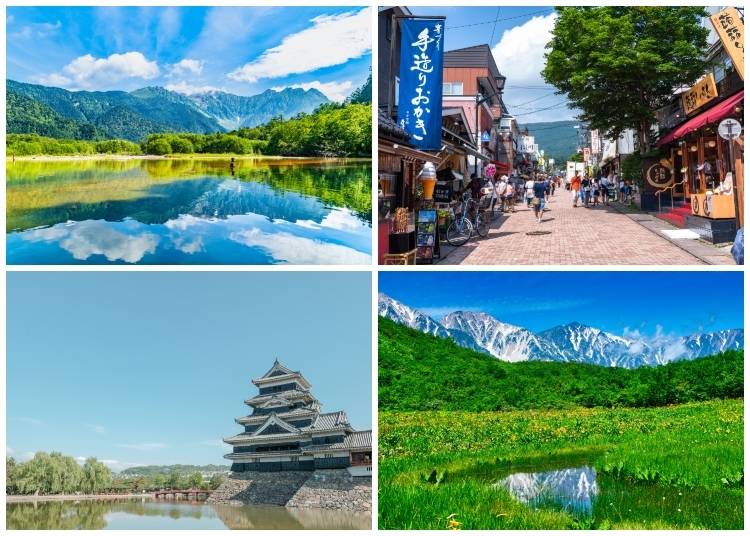
If beating the heat or avoiding rain is high on your list, Nagano's higher elevations are ideal due to its mountainous terrain situated in the Japanese Alps. While temperatures in cities like Matsumoto will still be higher, heading into less populated areas will give you those lower temps you're looking for.
Kamikochi is an alpine valley that offers cool mountain air. At an elevation around 1,500m, Kamikochi stays refreshingly cooler than the cities. You can do easy hikes along the Azusa River, see the iconic Kappa Bridge with stunning mountain backdrops, and even stay overnight in a mountain lodge. Mornings and evenings are crisp – a nice break from the humidity. Plus, no cars are allowed in the valley, so it's peaceful and pristine.
Karuizawa is a classic summer resort town for locals, known for pleasant nature walks, trendy cafes, and shopping at the Prince Shopping Plaza outlet. Since it sits on a plateau, Karuizawa is cooler. It's a lesser-known stop for international tourists but beloved by Tokyoites escaping the heat.
Additionally, Hakuba is a scenic mountain village best known for skiing, but it’s also a great summer base for hiking, cycling, and enjoying panoramic views of the Northern Alps. The elevation helps keep things cooler than the lowlands, and the area is well set up for outdoor activities, with gondolas running in summer and family-friendly trails across the valley. Local pensions and lodges offer a relaxed stay, and you'll find plenty of cafés and hot springs to unwind after a day outside.
Although it won't be as cool as it is in the mountains, as long as you're in Nagano Prefecture, Matsumoto is worth checking out for Matsumoto Castle and local specialty soba noodles and wasabi.
Best Place for Families with Children: Okinawa
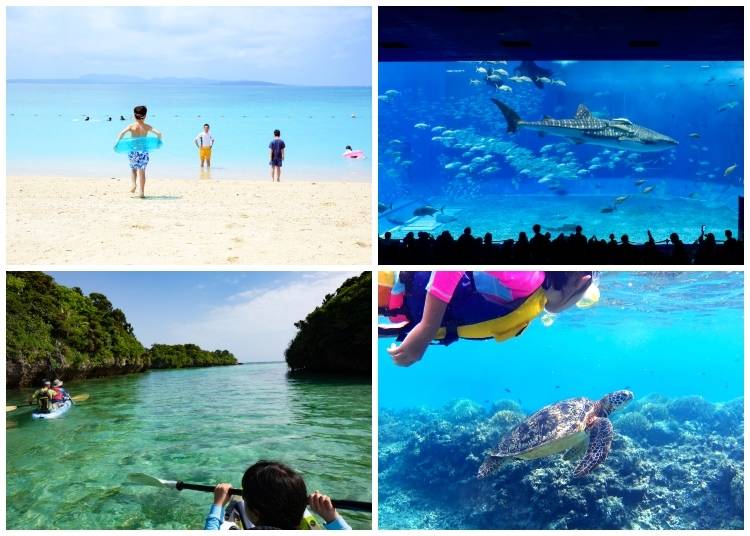
If your July trip to Japan is a family trip including children, Okinawa is an ideal destination. This subtropical island prefecture offers a dreamy blend of pristine beaches, unique marine life, and a distinct culture that will captivate children and adults alike.
The rainy season typically ends in Okinawa by late June, making the latter half of July particularly sunny and inviting, with temperatures not yet reaching their intense August peak. This creates perfect conditions for marine activities and exploration.
Churaumi Aquarium is one of the largest and best aquariums in the world, famous for its massive Kuroshio Tank with whale sharks and manta rays. It's a truly mesmerizing experience for all ages.
The numerous beaches across Okinawa Honto (main island) and its surrounding smaller islands (like Ishigaki or Miyakojima) offer opportunities for swimming, snorkeling, and building sandcastles. Many resorts have kid-friendly pools and activities.
Junglia Okinawa, a new adventure theme park set to open on July 25, 2025, in northern Okinawa, promises an immersive blend of nature and thrilling adventure attractions. This will be a fantastic new addition for families seeking a unique and exciting experience.
Okinawa World provides a cultural and historical experience, featuring Gyokusendo Cave (a stunning limestone cave), a traditional Okinawan village, and craft workshops where kids can try their hand at making local items.
For a unique wildlife encounter, Neo Park Okinawa combines a zoo, botanical garden, and a bird park where some birds roam freely.
The Ryukyu Mura theme park allows families to step back in time and experience traditional Okinawan life, with old houses, craft demonstrations, and cultural performances like Eisa dance.
Best Place for Great Scenery: Furano & Biei (Hokkaido)
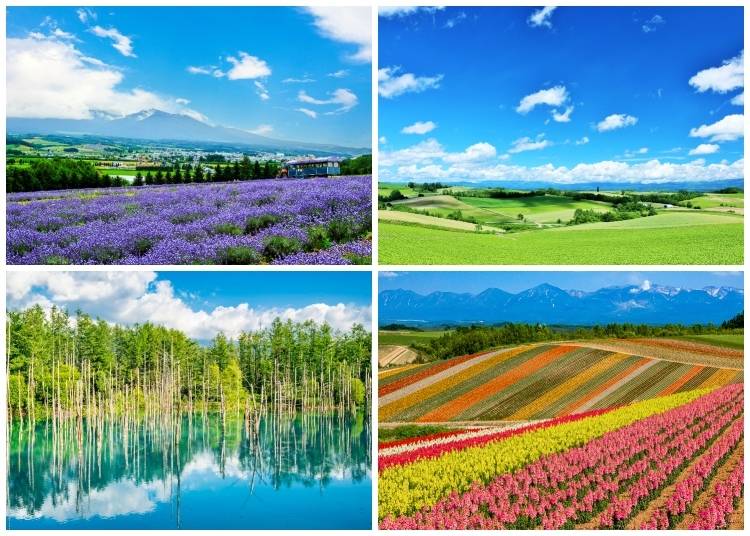
For excellent scenery in July, Hokkaido is a treasure trove of natural beauty. In particular, the heart of Japan's vast northern island is a region full of color.
In Biei, Patchwork Road and Panorama Road circuits offer rolling hills with rainbow fields of various flowers. Whether you're driving or cycling, it's like you've become part of a painting.
Near Biei, Shirogane Blue Pond is a surreal electric-blue pond in a forest that's become famous in recent years. If you go early in the morning, you'll see the best color and fewer people for some stunning photos.
Just down the road in Furano, Hokkaido's signature lavender fields take center stage at places like Tomita Farm and Lavender East, Japan's largest lavender field with nearly 90,000 plants.
Mid-July is peak lavender season, and while you're in the area, be sure to try some lavender-flavored ice cream.
Best Place to Avoid the Crowds: Shikoku
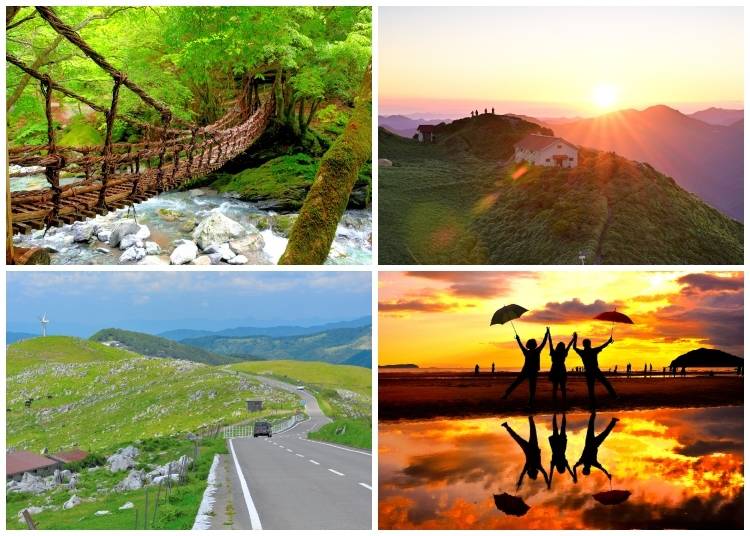
If you're looking for quieter alternatives, consider Shikoku (Japan’s fourth main island), where you’ll find peaceful landscapes, historic towns, and far fewer visitors.
You don’t need to walk the full 88-temple pilgrimage to enjoy the route. Many of its temples are located in charming countryside towns that offer a slower, more traditional pace of life.
In Ehime, the town of Uchiko features well-preserved merchant houses and a small kabuki theater, providing a window into Japan’s past without the crowds found in more popular areas.
In Kagawa, Kotohira is home to Kompira-san, a revered shrine reached by climbing hundreds of stone steps. After your visit, you can unwind in a local hot spring and stroll along the quiet, old-fashioned shopping street nearby.
Tokushima’s Iya Valley is one of Japan’s most remote and scenic destinations. Known for its steep forested cliffs, vine bridges, and deep gorges, the valley offers a sense of solitude rarely found elsewhere. The Kazurabashi vine bridge is a popular photo spot, and nearby Oboke Gorge is ideal for white-water rafting. While Tokushima becomes lively in August during the Awa Odori dance festival, visiting in July lets you enjoy the region’s beauty during a quieter period.
Recommended Day Trips
From Tokyo
Tokyo is a fantastic base for day trips, thanks to excellent train connections. Here are three spots to give you a taste of July in Japan.
Enoshima (Kanagawa): A small offshore island about an hour south of Tokyo. In July, Enoshima has a fun beach vibe, and the nearby Shonan beaches will be full of local surfers and beach houses. Explore Enoshima's hilltop shrine complex, then descend to the Iwaya Caves on the far side of the island. There's a picturesque hiking trail, or you can take an escalator (for a fee) if you prefer not to climb the hill. Be sure to try some fresh seafood like shirasu (whitebait) rice bowls, a local specialty.
Kawagoe (Saitama): Only 30 minutes from central Tokyo via express train, Kawagoe is an Edo-period town that retains historic charm. Nicknamed "Koedo" (Little Edo), the town's warehouse district, lined with kurazukuri (clay-walled warehouse-style buildings), exudes a nostalgic atmosphere, and the iconic Toki no Kane clock tower has tolled the time for centuries. At Kawagoe Hikawa Shrine, hundreds of wind chimes (furin) create a magical tinkling sound in the July breeze. The shrine also has a tunnel of ema (wooden wish plaques) you can walk through. Candy Alley (Kashiya Yokocho) is a narrow street where traditional sweet shops sell candies, rice crackers, and sweet potato snacks for which Kawagoe is famous.
Hakone (Kanagawa): A classic day trip or overnight from Tokyo, Hakone offers hot spring bathing and views of Mt. Fuji (on clear days). In summer, Mt. Fuji is often hazy, but you might catch a morning glimpse. Hakone's real appeal in July is the variety: you can ride the Hakone Ropeway over the volcanic valley of Owakudani where geothermal steam vents out of the mountainside, take a boat cruise on Lake Ashi with the possibility of Fuji views, and then relax in a hot spring onsen bath. An onsen might sound hot in summer, but it can be rejuvenating if done later in the day when it's cooler outside. The Open-Air Museum and its garden, dotted with large sculptures, is a popular destination, but crowds are manageable on weekdays.
From Kyoto
Kyoto is in the Kansai region, surrounded by fascinating places. Here are a few day trip ideas offering unique experiences beyond the usual Osaka or Nara trips.
Uji (Kyoto Prefecture): Just about 30 minutes south of Kyoto by train, Uji is a small city famous for its green tea and Byodo-in Temple. The temple's Phoenix Hall (seen on 10 yen coins) is a stunning Heian-period structure, and there's also a museum with impressive Buddhist statues on site. In July, lotus flowers bloom in the ponds around the temple, adding to the beauty. In Uji, you can attend a tea tasting or tea picking experience at places like Nakamura Tokichi Honten, which also has a café serving matcha soba and incredible matcha parfaits. Stroll across the Uji River, and a short trail up to Daikichiyama Observation Point offers a nice view of Uji and the river. The statue of Murasaki Shikibu by the river is a setting in the classic "Tale of Genji." On the way back to Kyoto, make a quick stop at Fushimi Inari Taisha shrine, famous for the thousands of vermilion torii gates that line its cool forest pathway.
Hikone & Lake Biwa (Shiga): About a 50-60-minute train ride from Kyoto, Hikone is full of lakeside charm. Hikone Castle is smaller and less crowded than many of the larger castles, giving you space to soak in the atmosphere. Lake Biwa (Japan's largest lake) is visible from the castle keep. The castle grounds include moats you can boat on and the serene Genkyu-en Garden with its central pond and teahouse. A Biwako tour boat from Hikone Port (if available) for a short cruise on Lake Biwa is a refreshing ride. In Hikone, Yume Kyobashi Castle Road is lined with Edo-style buildings now housing shops and restaurants where you can try Omi beef (a Shiga specialty) for lunch or grab some ice cream.
Kobe (Hyogo): About 30-40 minutes from Kyoto by Shinkansen and just under 1 hour on regular trains, Kobe, while full of historical sites like Kyoto, offers a glimpse into a different side of Japan's history. The Kitano-cho Ijinkan District is a historical area with Western-style homes from the Meiji era and stylish cafes. Kobe's Nankinmachi is considered one of Japan's top 3 Chinatowns. The neighborhood offers a colorful glimpse into Japan's multicultural history and is a great spot for quick street food snacks. Kobe Harborland offers waterfront activities from district shopping and dining, to ocean views from the Ferris wheel and Kobe Port Tower. Other attractions around the city include tours of sake breweries, onsen bathing at one of Japan's oldest hot springs, and boat tours of the port.
Experience Japan in July
July in Japan is a time of lively celebrations, exciting events, and refreshing activities that mark the arrival of the summer season.
Festivals & Traditional Celebrations
Tanabata (Star Festival) (Nationwide; early July): This romantic festival celebrates the annual meeting of star-crossed lovers. You'll see streets and public spaces adorned with colorful streamers and bamboo wish trees where people hang tanzaku (wish papers). Tanabata is celebrated nationwide – you'll even find bamboo branches with wishes outside homes or local businesses, making it a very accessible festival experience. The Hiratsuka Tanabata Festival (July 4-6) in Kanagawa Prefecture is one of the most well-known. Discover the story of Tanabata here.
Gion Matsuri (Kyoto; throughout July): Kyoto's largest and most famous festival, held for over 1,100 years, the Gion Matsuri is a series of events spanning the entire month. The main highlights are the magnificent Yamaboko Junko grand float processions on July 17 and 24. Enormous, lavishly decorated floats (some reaching 25 meters tall!) are pulled through downtown Kyoto. The Yoiyama evenings on July 14-16 feature bustling food stalls and allow you to view the elaborate floats up close before the main parades. Everything you need to know about the Gion Matsuri here.
Tenjin Matsuri (Osaka; July 24-25): Recognized as one of Japan's "big three" festivals, Osaka's Tenjin Matsuri honors Sugawara no Michizane, the Shinto god of learning. On July 25th, a spectacular land parade is followed by over 100 boats sailing down the Okawa River, carrying performers, dancers, and portable shrines. The evening culminates in a grand fireworks show. Details on the Tenjin Matsuri here.
Other Local Summer Festivals: Many towns and cities across Japan host their own unique festivals throughout July. The Gujo Odori in Gifu, running from mid-July through early September, is a famous dance festival where the entire town of Gujo Hachiman dances nightly, and visitors are warmly welcomed to join. In Tokyo, the Kagurazaka Matsuri (July 23-26) features a charming Hozuki (lantern flower) market and evening dance processions through a historic geisha district, while the Koenji Awa Odori (July 24-26) showcases lively Awa dancing and rows of food stalls.
Major Events & Sports
Expo 2025 Osaka Kansai (Osaka; April 13 - October 13): The highly anticipated World Expo continues throughout July, presenting global pavilions and cutting-edge exhibits under the theme "Designing Future Society for Our Lives." Held once every five years (and Osaka's second time hosting), this is a fun and educational event not to be missed. Read more here.
Baseball (Nationwide; March 28 - November 2): Baseball is one of Japan's most popular sports, with professional teams playing in cities across the country. Catch a local game for a true cultural experience. The Nippon Professional Baseball All-Star Series (two games) will be played at Kyocera Dome Osaka on July 23 and Yokohama Stadium on July 24. More about baseball in Japan here.
Sumo Wrestling (Nagoya; July 11 - 27): Experience Japan's national sport firsthand. After being held in the Aichi Prefectural Gymnasium for 59 years, the 2025 Nagoya Basho will be the inaugural event of the soon-to-open IG Arena. It's also the highly anticipated yokozuna debut of newly promoted wrestler Onosato. Read more about getting sumo tickets here.
Fun Summer Activities
Watch Spectacular Fireworks Shows: Summer is synonymous with fireworks season (hanabi). Held since 1733, the most famous show is the Sumida River Fireworks in Tokyo, taking place on the last Saturday of July (July 26, 2025). Over 20,000 spectacular fireworks light up the sky near Tokyo Skytree. Fireworks shows are extremely crowded (the Sumida River event draws close to a million viewers), so go early to claim a spot, or consider smaller local shows. If you don't mind crowds, hanabi events are unforgettable – you'll literally feel the boom of the colorful fireworks! Read all about Japan's incredible fireworks festivals here.
Relax at Beer Gardens & Rooftop Dining: As temperatures rise, many hotels and department stores across Japan open up rooftop beer gardens. These are fun spots to spend an evening under the stars, often featuring lanterns, an all-you-can-eat buffet, and cold beer or soda. In Sapporo, the Odori Park Beer Garden is a month-long event in July, spanning blocks with different brewery tents.
Cool Off with Beach Time & Water Sports: Japan offers diverse options for cooling down by the water. Beaches around Tokyo (Zushi, Kamakura) or Osaka (Suma) are busy in July. For a more offbeat experience, try surfing in Shonan (Enoshima/Kugenuma have rental shops and lessons). Okinawa offers fantastic snorkeling and diving (July is great for visibility unless a typhoon stirs waves). Even lakes like Lake Biwa have spots for kayaking or stand-up paddleboarding. You can also visit water parks (like Tokyo Summerland or Osaka's Hirakata Park with a pool area) if you crave pools and slides.
Try a Themed Cafe or Quirky Indoor Activity: For sweltering afternoons or rainy spells, Japan has plenty of entertaining indoor escapes. Cool off with a visit to teamLab Planets in Toyosu, an immersive digital art museum where you’ll walk barefoot through water-filled exhibits that feel especially refreshing in summer. Or head to Art Aquarium in Ginza, where vibrant goldfish swim through kaleidoscopic displays—it's both visually stunning and cooling to experience. And don’t forget Tokyo’s endless array of themed cafes.
What to Eat in Japan in July
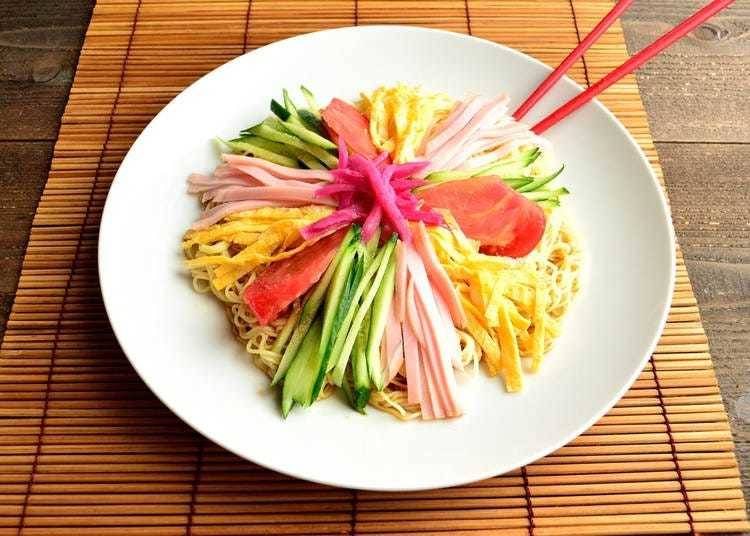
One of the joys of traveling in Japan is the seasonal food. Here's what to look for in July to delight your taste buds.
Kakigori (Shaved Ice): The ultimate Japanese summer dessert, shaved ice is flavored with fruity syrups and often condensed milk. Traditional flavors include strawberry, lemon, and melon, but you'll also find gourmet versions with matcha (green tea) syrup, azuki red beans, and mochi. Kakigori is sold at festival stalls and specialty cafes. Look for the 氷 kanji (meaning ice) displayed on a flag.
Cold Noodles: Hiyashi chuka is a chilled ramen salad topped with sliced cucumber, egg crepe strips, ham, tomato, etc., served with a tangy soy-vinegar dressing. Somen are very thin white noodles, often served cold in iced water with a dipping sauce. Zaru udon or zaru soba (cold udon or soba noodles on a bamboo tray with dipping sauce) are also common.
Unagi (Freshwater Eel): Summer is eel season in Japan. There's even a specific day, Doyo Ushi no Hi (Day of the Ox in midsummer, usually late July), on which people traditionally eat unagi to gain stamina for withstanding the summer heat. Unagi is typically grilled with a sweet soy-based sauce (kabayaki style) and served over rice – called unadon (in a bowl) or unaju (in a lacquer box).
Seasonal Fruits: Watermelon (suika) is the iconic summer fruit in Japan. Japanese watermelon is sweet and crisp – a perfect snack. Peaches (momo) come into season late July. Japanese peaches are huge, juicy, and fragrant. Try a peach parfait if you're in a cafe.
Street and Festival Foods: At July festivals, takoyaki (octopus balls), yakisoba (stir-fried noodles with veggies and sauce), okonomiyaki (savory pancake), grilled corn with soy glaze, cucumber on a stick, kakigori, and choco banana (banana on a stick dipped in chocolate and sprinkles) are fun, tasty summer staples.
Cold Sweets & Drinks: Look for anmitsu (jelly and fruit dessert with syrup and red beans), often served with ice cream. Mizu yokan (chilled sweet red bean jelly) is another traditional sweet eaten in hot weather. Stay hydrated with caffeine-free mugicha (barley tea). Many restaurants bring a pitcher of cold barley tea instead of water in summer.
Tips for Visiting Japan in July
Lastly, here are some useful tips to help your July trip go smoothly.
Stay Hydrated: Carry a water bottle and refill often. Use vending machines and convenience stores to grab cold drinks. Sports drinks like Pocari Sweat or Aquarius help replenish electrolytes, and convenience stores also sell rehydration packets to help combat dehydration.
Time Activities to Beat the Heat: Plan outdoor sightseeing or walking in the early morning or late afternoon/evening. Many temples open at 8 or 9 AM, and you can visit indoor attractions by midday. From 5 to 7 PM is a bit cooler in summer, and many festivals and events happen in the evening, so you can still sightsee after sundown.
Accommodation and Travel Booking: If your trip overlaps with Japanese school holidays (typically from around July 20 onward), expect more domestic travelers on the move. Book accommodation in advance, especially in beach or mountain resort areas, as locals head out for their summer vacation, which often coincides with the Obon holiday. Trains rarely "sell out" because they don't require reservations, but bullet trains and airports get busier in late July. It's also wise to book your flights and any major train passes (like the Japan Rail Pass, if applicable) well in advance. If climbing Mt. Fuji, book your mountain hut well in advance.
Typhoon Watch: July may see typhoons, so it's a good idea to have some flexibility in your itinerary. If a typhoon is forecast, it may mean a day of heavy rain and wind, so consider rainy day activities. Follow local news or use a weather app (the Japan Meteorological Agency has English alerts) to stay updated. Thankfully, typhoons are usually well-predicted, and often the day after, the sky is clear and the temperature might be a bit cooler.
Summer Etiquette: Feel free to participate in summer festivals, but be mindful of any instructions given by festival staff or volunteers. Dispose of trash properly; festivals often have clearly labeled bins. When using public transport in summer, some people carry a small towel to wipe the sweat from their face before boarding a train, etc. If you sweat a lot, consider carrying a spare t-shirt to change into as needed.
It might be hotter or more humid than you're used to, but July is also lively, friendly, and vibrant. Japanese summers are full of natsukashii (nostalgia) for locals who recall catching beetles or hearing wind chimes. As a visitor, you get to create your own nostalgic memories of a Japanese summer. Whether it's that first bite of kakigori after a long temple walk, the sound of taiko drums in the night, or a quiet moment watching fireflies in a rural inn's garden, July in Japan will give you stories to tell long after your tan has faded.
Having lived in Japan for 14 years, Gabriel frequently traveled throughout the country, especially in the Chubu and Kansai regions. Before contributing to LIVE JAPAN, where he has written and edited articles and curated social media content, he taught English, trained teachers, and proofread medical and academic papers in Japan. He has also written for student newspapers, done curriculum development and proofread a book on ‘80s toys. He loves Japanese (and other Asian) food, history, castles, and mountains.
- Category
*Prices and options mentioned are subject to change.
*Unless stated otherwise, all prices include tax.
Popular Tours & Activitiess
Recommended places for you
-
Goods
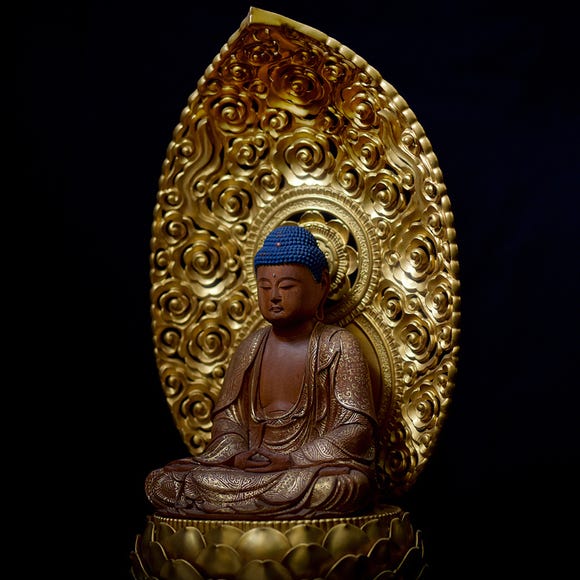
Yoshida Gennojo-Roho Kyoto Buddhist Altars
Gift Shops
Nijo Castle, Kyoto Imperial Palace
-

Kanzenkoshitsuyakinikutabehodai Gyugyu Paradise Sannomiya
Yakiniku
Kobe, Sannomiya, Kitano
-

Kambei Sannomiyahonten
Yakiniku
Kobe, Sannomiya, Kitano
-

ISHIDAYA Hanare
Yakiniku
Kobe, Sannomiya, Kitano
-

Jukuseiniku-to Namamottsuarera Nikubaru Italian Nikutaria Sannomiya
Izakaya
Kobe, Sannomiya, Kitano
-
Appealing

Rukku and Uohei
Izakaya
Sapporo / Chitose
-

A Travel Game Changer! Go Hands-Free Between Tokyo and Kyoto with LUGGAGE EXPRESS by JTB and JR Tokai
by: Guest Contributor
-

Enjoy Japan's Gorgeous Winter Lights! Ride the Romancecar to Shonan no Hoseki Illumination
by: Guest Contributor
-

Don't Miss Out! The One Thing You Must Do Before Shopping at Mitsui Shopping Park LaLaport: Get Your Max 10% OFF Coupon Book
-

LaLaport TOKYO-BAY North Building Now Open: Shop, Dine & Enjoy Events at LaLa arena, Just 2 Stops from Disney
by: Wemmy Chau
-

See Asakusa and Tokyo Skytree® in a New Light at the "Také Akari" Festival (Winter 2025-2026)
by: Guest Contributor
-

2025 Japan Autumn Color Report: Tokyo's Ginkgo Trees Starting to Glow
by: Timothy Sullivan
-

Sendai Umino-Mori Aquarium: Inside Northeast Japan's Largest Aqua Attraction
-

Enjoying Tokyo in Summer (June/July/August): Weather, Clothing for Adults & Kids, and Best Attractions
by: Tiffany YU
-

Asia's Longest Zipline! 'HANAZONO ZIP WORLD' Opens Summer 2022 in Hokkaido
by: Cassandra Lord
-

Gion Matsuri Guide (July 2025): Access and Tips on Enjoying One of Japan's Three Great Festivals in Kyoto
-

Yamagata Prefecture Guide: Destinations, Activities, Travel Advice, Shopping & More
by: Steve Csorgo
-

6 Popular Tokyo Summer Flower Markets: Morning Glory Fairs and Japanese Lantern Plant Markets
- #best sushi japan
- #what to do in odaiba
- #what to bring to japan
- #new years in tokyo
- #best ramen japan
- #what to buy in ameyoko
- #japanese nail trends
- #things to do japan
- #onsen tattoo friendly tokyo
- #daiso
- #best coffee japan
- #best japanese soft drinks
- #best yakiniku japan
- #japanese fashion culture
- #japanese convenience store snacks








































